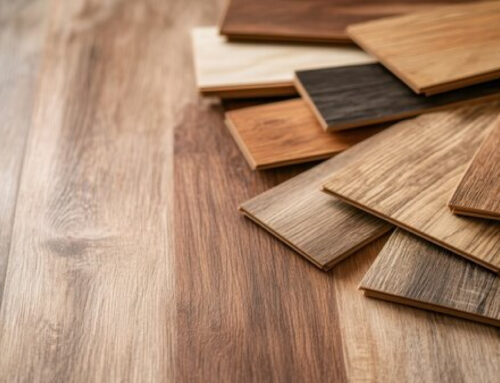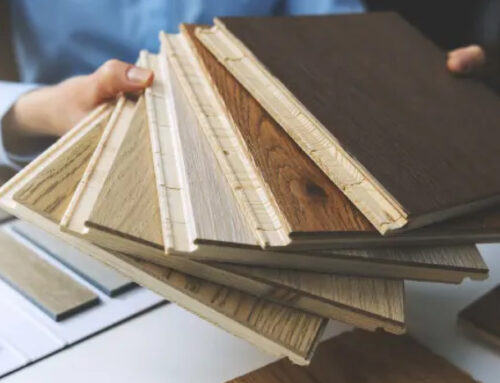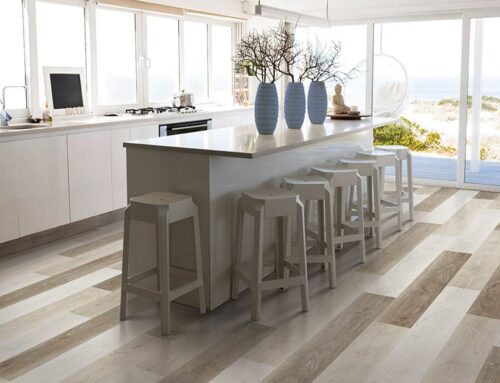[TL;DR]
“This comprehensive guide helps homeowners choose between satin and matte floor finishes by examining their key differences in durability, appearance, and maintenance.
- Satin finish offers superior washability and moisture resistance, making it ideal for high-traffic areas like kitchens, bathrooms, and hallways.
- Matte finish excels at hiding floor imperfections and creating elegant, classy spaces perfect for bedrooms and living rooms.”
The guide includes a detailed comparison table covering 12 essential factors, an 8-step decision framework, and expert testing recommendations to ensure the right choice for your specific needs and lifestyle.
Choosing the wrong floor finish ruins even the most beautiful hardwood selection. Satin vs matte finish creates the biggest decision dilemma for homeowners, and getting it wrong means costly refinishing, maintenance headaches, or floors that never look quite right.
Floor finish controls how light bounces off your hardwood, dramatically affecting durability, appearance, and cleaning requirements. While satin offers superior washability for busy households, matte creates elegance that hides imperfections beautifully.
The secret lies in matching finish properties to your specific room needs and lifestyle. Most homeowners never realize how dramatically the right floor finish can enhance their home’s investment, but at Rustic Wood Floor Supply, we’ve helped thousands of customers create stunning spaces where every element works in perfect harmony.
What Is Floor Finish Sheen?
Floor finish sheen measures how much light a flooring surface reflects. Higher sheen levels create more light reflection, while lower sheens absorb more light.
The sheen spectrum includes these levels:
- Matte/Ultra-Matte: No shine, maximum light absorption
- Low-Luster: Minimal shine with slight reflection
- Satin: Moderate shine with balanced reflection
- Semi-Gloss: Noticeable shine with high reflection
- High-Gloss: Maximum shine with mirror-like reflection
Floor finish sheen affects both visual appeal and practical performance. Higher sheens resist stains and moisture better, while lower sheens hide surface imperfections more effectively.
What Is Satin Floor Finish?
Satin floor finish provides moderate shine with soft light reflection. This sheen level creates a subtle glow without overwhelming brightness on your hardwood floors.
Satin finish contains more polyurethane resin than matte finishes, creating a harder, more protective surface. The finish reflects approximately 25-35% of light, producing a gentle sheen that enhances wood grain depth and natural beauty.
Pros of Satin Floor Finish
Satin floor finish offers superior durability for active households:
- Enhanced washability: Spills and marks clean easily without damage
- Moisture resistance: Protects against water damage and humidity
- Durability: Withstands foot traffic and furniture movement
- Wood grain enhancement: Reflects light to showcase natural wood beauty
- Versatile application: Works well with all hardwood species and stains
Satin performs exceptionally in hallways, kitchens, dining areas, and family rooms where foot traffic and cleaning frequency matter most.
Cons of Satin Floor Finish
Satin’s reflective properties create specific challenges:
- Highlights imperfections: Shows scratches, dents, and wood grain irregularities
- Visible wear patterns: High-traffic areas develop noticeable dulling over time
- Application complexity: Requires professional installation for best results
- Surface preparation: Demands thorough sanding and preparation for optimal appearance
What Is Matte Floor Finish?
Matte floor finish absorbs light rather than reflecting it, creating a smooth, natural wood appearance. This sheen level produces minimal light reflection for subtle elegance.
Matte finish contains specialized additives that reduce gloss, resulting in a more natural-looking surface. The finish reflects only 5-15% of light, creating a flat appearance that emphasizes wood’s natural character without artificial shine.
Pros of Matte Floor Finish
Matte floor finish excels at creating comfortable, natural spaces:
- Hides imperfections: Conceals minor scratches, dents, and wood grain variations
- Natural appearance: Creates an authentic, unfinished wood look
- Easy touch-ups: Repairs blend seamlessly with the existing finish
- Reduced glare: Eliminates harsh light reflection and hot spots
- Contemporary appeal: Provides a trendy, modern aesthetic
Matte works beautifully in bedrooms, living rooms, and formal areas where natural ambiance matters most.
Cons of Matte Floor Finish
Matte’s specialized nature creates maintenance considerations:
- Stain susceptibility: Shows spills and marks more readily than satin
- Cleaning limitations: Requires gentler cleaning methods to preserve the finish
- Durability concerns: May wear faster in extremely high-traffic areas
- Limited protection: Offers less moisture barrier than higher-sheen options
- Touch-up frequency: May need more frequent maintenance in active areas
Satin vs Matte: Side-by-Side Comparison
Direct comparison reveals how these finishes perform differently across key factors that matter most to homeowners. Each finish excels in specific situations while presenting unique challenges.
1. Appearance and Light Reflection
(Subtle Enhancement vs. Natural Authenticity)
Satin finish reflects light to enhance wood grain depth and natural color variations that make floors feel more luxurious and spacious. The subtle shine adds dimension to hardwood while maintaining sophistication, showcasing the wood’s natural beauty through gentle light reflection that creates visual interest without overwhelming brightness.
Matte finish absorbs light for a natural, unfinished wood appearance that creates intimate, cozy atmospheres with authentic character. The lack of reflection produces elegance that feels organic and understated, perfect for creating calm, contemporary environments that emphasize natural materials.
2. Durability and Protection
(Superior Defense vs. Gentle Protection)
Satin finish provides better protection against daily wear, creating a harder surface that resists water damage, stains, and furniture scratches. The polyurethane barrier shields wood fibers more effectively, making it ideal for busy households where floors face constant foot traffic and occasional spills.
Matte finish offers adequate protection for normal use but requires more careful maintenance to preserve appearance. The specialized additives provide basic wood protection while maintaining natural aesthetics, suitable for areas with moderate traffic and careful handling.
3. Maintenance and Cleaning
(Easy Care vs. Specialized Care)
Satin finish allows regular mopping and standard hardwood cleaners without damaging the protective surface. Weekly cleaning maintains appearance easily, and the sealed surface prevents most stains from penetrating into the wood itself.
Matte finish requires pH-neutral cleaners and gentle cleaning techniques to avoid damaging the specialized surface. The finish benefits from professional maintenance products designed specifically for low-sheen floors to preserve the natural appearance.
4. Cost and Installation
(Standard Investment vs. Premium Investment)
Satin finish represents standard pricing for quality polyurethane applications with widespread availability from most flooring contractors. Professional installation ensures proper application, but the familiar process keeps labor costs reasonable for most projects.
Matte finish typically costs 10-20% more than satin due to specialized formulations and application techniques. The trending popularity and technical requirements often require experienced contractors familiar with low-sheen applications.
Satin vs Matte Floor Finish: Quick Comparison Table
| Factor | Satin Finish | Matte Finish |
| Light Reflection | 25-35% reflection, subtle shine | 5-15% reflection, minimal shine |
| Durability | 25-35% reflection, subtle shine | Moderate: adequate protection |
| Washability | Excellent: sealed surface | Good: basic moisture protection |
| Stain Resistance | High: repels most spills | Moderate: shows stains more readily |
| Scratch Visibility | Moderate: shows in high traffic | Low: hides minor scratches |
| Cleaning Ease | Easy: standard hardwood cleaners | Careful: specialized products needed |
| Wood Grain Enhancement | Enhanced: showcases natural beauty | Natural: authentic, unfinished look |
| Traffic Suitability | High-traffic areas ideal | Moderate-traffic areas preferred |
| Installation Cost | Standard pricing | 10-20% premium |
| Maintenance Frequency | Monthly deep cleaning | Bi-monthly gentle cleaning |
| Longevity | 8-12 years before refinishing | 6-10 years before refinishing |
| Best Applications | Kitchens, hallways, family rooms | Bedrooms, living rooms, studies |
How to Choose the Right Floor Finish: Complete Decision Guide
Selecting between satin vs matte floor finish requires evaluating multiple factors specific to your space and lifestyle. Follow this comprehensive step-by-step process to make the best choice.
Step 1: Evaluate Your Room’s Daily Activity Level
Your room’s daily activity determines which finish survives and thrives long-term. High-traffic areas demand satin’s superior durability, while peaceful spaces benefit from matte’s natural charm.
Choose Satin for Active Areas:
- Kitchens: Cooking spills, steam, and frequent foot traffic
- Hallways: Constant movement and furniture transportation
- Family rooms: Children playing, pets, and daily entertainment
- Entryways: Outdoor elements, shoes, and weather exposure
Choose Matte for Quiet Spaces:
- Master bedrooms: Gentle use with minimal furniture movement
- Formal living rooms: Occasional entertaining without daily wear
- Home offices: Controlled environments with careful foot traffic
- Guest bedrooms: Infrequent use requiring minimal maintenance
Consider mixed-use rooms carefully. A dining room serving both formal entertaining and family meals benefits from satin’s durability despite preferences for matte’s elegance.
Step 2: Assess Your Wood Species and Grade
Wood characteristics dramatically affect which finish looks best and performs properly. Matte emphasizes natural grain beautifully, while satin showcases premium lumber but highlights every imperfection.
Matte Works Best With:
- Rustic grade hardwood with natural character marks and grain variation
- Reclaimed wood with authentic patina and weathered appearance
- Wide plank flooring where natural beauty takes center stage
- Hand-scraped or distressed surfaces with intentional texture
Satin Enhances:
- Select grade hardwood with minimal knots and consistent grain
- Exotic species with unique grain patterns are worth showcasing
- Traditional plank widths where uniformity creates elegance
- Smooth, precision-milled surfaces ready for high-gloss enhancement
Remember:
Satin acts like a magnifying glass on wood quality, while matte works like a natural filter that enhances character while hiding minor flaws.
Step 3: Consider Your Home’s Lighting Situation
Lighting transforms how finishes appear throughout the day and affects your room’s overall ambiance. Understanding light interaction helps predict how your choice will look in real conditions.
Natural Light Considerations:
- South-facing rooms: Abundant light enhances satin’s reflective beauty
- North-facing rooms: Limited light benefits from the satin’s brightness boost
- East/West-facing rooms: Variable light requires careful sample testing
Artificial Lighting Effects:
- Recessed lighting creates dramatic shadows with satin, even glow with matte
- Pendant lighting highlights satin’s reflective qualities beautifully
- Table and floor lamps complement the matte’s natural, cozy appearance
Light temperature matters significantly. Warm light (2700K-3000K) flatters both finishes naturally, while cool light (4000K+) can make satin appear harsh and matte more refined.
Step 4: Match Your Maintenance Style
Your cleaning habits and available time determine long-term satisfaction with either finish choice. Honest self-assessment prevents future frustration with maintenance requirements.
Satin Suits Low-Maintenance Households:
- Weekly mopping fits your routine comfortably
- Standard hardwood cleaners and techniques work for you
- Professional refinishing every 8-12 years seems reasonable
- Consistent appearance maintenance appeals to your preferences
Matte Fits Careful-Maintenance Lifestyles:
- Gentle cleaning methods match your attention to detail
- Specialized products and techniques don’t intimidate you
- More frequent touch-ups sound manageable
- Natural aging and patina development appeal to your aesthetic
Satin rewards consistent care with lasting protection, while matte requires thoughtful maintenance but offers authentic natural beauty.
Step 5: Align with Your Design Vision
Your aesthetic goals and wood choice influence how finishes support your overall design vision. Each finish affects wood appearance and room atmosphere differently.
Style Coordination Guidelines:
- Modern/Contemporary: Matte’s clean, natural look complements minimalist aesthetics
- Traditional/Classic: Satin suits formal design elements and showcases quality
- Farmhouse/Rustic: Matte enhances authentic, lived-in charm perfectly
- Industrial/Urban: Both work, choose based on desired sophistication level
Color and Stain Considerations:
- Light stains: Satin adds depth while matte maintains natural lightness
- Dark stains: Matte prevents overwhelming richness in dramatic colors
- Natural/unstained: Both showcase wood beauty: choose based on traffic needs
Coordinate thoughtfully with existing elements. Cabinet finishes, trim work, and furniture pieces should harmonize with floor sheen choices for cohesive design.
Still confused? Our flooring experts at Rustic Wood Floor Supply can help you create that perfect combination where your floors, lighting, and lifestyle work together beautifully.
Step 6: Calculate Your Investment
Financial considerations extend beyond finish costs to include installation, maintenance, and future refinishing expenses. Smart budgeting considers total ownership costs over time.
Satin Investment Breakdown:
- Finish cost: Standard polyurethane pricing
- Installation: Professional application recommended
- Maintenance: Standard hardwood care products
- Longevity: 8-12 years before refinishing is needed
Matte Investment Considerations:
- Finish premium: 10-20% higher material costs
- Specialized installation: Experienced contractors recommended
- Care products: pH-neutral, matte-specific cleaners required
- Longevity: 6-10 years before refinishing is typically needed
Money-Saving Reality Check:
Satin’s standard pricing and longer lifespan often provide better value in high-traffic areas. Matte’s premium cost balances against its stunning natural appearance and contemporary appeal. Calculate the 10-year total cost, including maintenance and refinishing schedules.
Step 7: Factor in Special Circumstances
Specific situations influence finish choice beyond standard room function analysis. Consider these factors if they apply to your household.
- Families with Children: Satin handles spills, toys, and active play better than matte’s delicate surface. However, matte shows fewer scuff marks from bikes, skates, and furniture dragging. Consider children’s ages and activity levels.
- Pet Owners: Satin resists water damage from pet accidents and cleans easily, while matte hides scratches from pet claws better. Both require prompt attention to pet-related incidents, but satin offers superior protection.
- Allergies and Health: Satin’s sealed surface prevents allergen accumulation better than matte’s slightly more porous finish. Regular cleaning maintains healthier indoor air quality with satin finishes.
Step 8: Test Before Final Commitment
Professional testing prevents expensive mistakes and ensures complete satisfaction with your final choice. This small investment saves significant time, money, and frustration later.
Proper Testing Process:
- Sample boards: Request 12″x12″ samples of your exact wood species with both finishes
- Home evaluation: Live with samples for one full week under all lighting conditions
- Traffic testing: Place samples in high-use areas to observe wear patterns
- Cleaning trials: Test your typical cleaning methods and products on both samples
Evaluation Criteria:
- Observe samples through complete daily lighting cycles, including morning brightness, afternoon shadows, and evening artificial light.
- Consider seasonal changes when selecting during winter or summer when natural light differs significantly.
- Gather input from all family members about appearance preferences and maintenance expectations.
Best Practices for Floor Finish Maintenance
Proper maintenance extends the life of any floor finish while preserving its intended appearance and protective qualities.
Satin Floor Finish Care
Daily Maintenance:
- Sweep or vacuum to remove abrasive dirt and debris
- Address spills immediately to prevent staining
- Use furniture pads to prevent scratches and dents
Weekly Cleaning:
- Damp mop with hardwood floor cleaner designed for polyurethane finishes
- Avoid excessive water that can penetrate joints and cause damage
- Dry thoroughly to prevent water spots and maintain sheen
Monthly Deep Care:
- Apply hardwood floor polish designed for satin finishes
- Check for wear patterns in high-traffic areas
- Address any scratches or damage promptly
Matte Floor Finish Care
Daily Maintenance:
- Gentle sweeping with a soft-bristled broom or a microfiber mop
- Immediate spill cleanup with absorbent, dry cloths
- Minimize dragging furniture or heavy objects across the surface
Weekly Cleaning:
- Use pH-neutral cleaners specifically formulated for matte finishes
- Spray-and-wipe method preferred over traditional mopping
- Allow complete air drying to preserve the matte appearance
Monthly Maintenance:
- Apply matte floor refresher products to restore the appearance
- Professional assessment for high-traffic area touch-ups
- Monitor for areas requiring specialized attention
Final Call
Satin floor finish excels in active areas requiring durability and easy maintenance, while matte creates spaces with natural, authentic wood beauty. Choose satin for kitchens, hallways, family rooms, and entryways where protection and cleaning frequency matter most. Select matte for bedrooms, living rooms, and formal areas where natural ambiance and contemporary aesthetics take priority.
At Rustic Wood Floor Supply, we understand how paint finishes and flooring materials work together to create cohesive, beautiful spaces. Our premium hardwood, luxury vinyl, and engineered flooring options complement any wall finish you choose. From rich, matte wall colors to satin finishes that complement sleek, modern flooring, we’ve got the perfect solution for your needs!
Want to complete your room transformation? Discover how the right flooring elevates your freshly painted space!
Explore Our Premium Flooring Collection: (678) 691-0533
Frequently Asked Questions
What is the main difference between satin and matte floor finishes?
Satin reflects light with a subtle shine and offers superior durability, washability, and moisture resistance, making it ideal for high-traffic areas. Matte absorbs light with minimal shine and excels at hiding floor imperfections while creating a natural, contemporary ambiance.
Which finish is better for high-traffic areas?
Satin finish performs significantly better in high-traffic areas because its harder surface resists scratches, stains, and moisture damage while allowing frequent cleaning. Kitchens, hallways, and family rooms benefit from satin’s superior durability and protective qualities.
Does matte floor finish hide scratches better than satin?
Yes, matte floor finish hides minor scratches and imperfections dramatically better than satin because it absorbs light rather than reflecting it, naturally concealing surface variations. Satin’s reflective properties highlight every scratch, scuff, and surface irregularity.
Can I mix satin and matte finishes in different rooms?
Yes, you can successfully use different finishes throughout your home by applying satin in high-traffic areas like kitchens and hallways while using matte in bedrooms and formal spaces. This strategic approach provides protection where needed and aesthetics where desired.
Which finish requires more maintenance over time?
Matte finish generally requires more specialized maintenance because it needs pH-neutral cleaners and gentle care techniques to preserve its appearance. Satin allows standard hardwood cleaning methods and resists daily wear better, making long-term maintenance simpler for most homeowners.
Author Profile
- I have worked in hardwood flooring for the last 8 years. Use to run a company of residential crews as well as a company with gym flooring. If you need floor installation or refinishing help, I should have an answer or at least get you in the right direction.
Latest entries
 FlooringDecember 24, 2025Right Advice For Picking The Ideal Hardwood Flooring Options
FlooringDecember 24, 2025Right Advice For Picking The Ideal Hardwood Flooring Options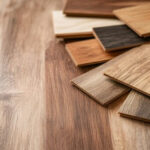 FlooringDecember 22, 2025What is Your Favorite Type of Hardwood Flooring and Why?
FlooringDecember 22, 2025What is Your Favorite Type of Hardwood Flooring and Why? FlooringDecember 15, 2025What is the Most Durable Engineered Hardwood Flooring?
FlooringDecember 15, 2025What is the Most Durable Engineered Hardwood Flooring?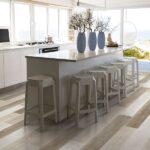 FlooringDecember 12, 2025How Do You Maintain Vinyl Flooring in Spokane Homes?
FlooringDecember 12, 2025How Do You Maintain Vinyl Flooring in Spokane Homes?


